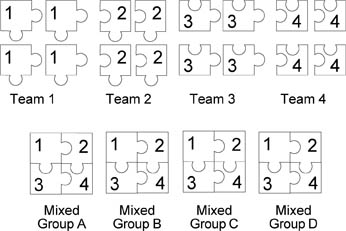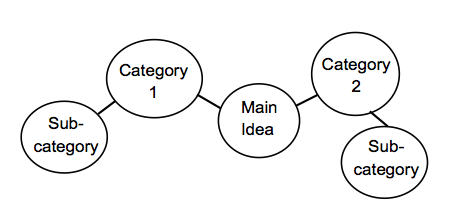Instructor Resource Library
- Teaching for All: Accessibility with CTE Canvas Course
- Digital Course Accessibility: What is Required, & How Do I Do It? (Workshop, recorded September 2025)
- Tech Tips Tuesday: Accessibility Tools (Digital Learning Technologies workshop, 10/2025)
- Teaching For All: Accommodating Learners with Disability and Chronic Medical Conditions (Panel discussion, recorded October 2023)
- Supporting Student Belonging in the Classroom (Workshop, recorded November 2024)
- Editing Course Materials and Canvas Pages for Accessibility (Workshop, recorded April 2024)
- Designing Instruction for Effective Active Learning
- Confirm or Revise and Reflect
- Fun & Flow in Higher Education
- Active Learning for Face-To-Face Classrooms
- Active Learning Strategies for Online and Hybrid Learning
Individual Activities
This activity can be adjusted to fit your class needs. It can be used to assess if students have retained knowledge from prerequisite classes (“Write down a quick proof of the quadratic equation.”) or as an assessment of the lesson you just delivered. Simply carve out 1-2 minutes during class where students can answer a targeted question. Give them the prompt, and then float throughout the room to provide assistance as needed. These can be anonymous or for credit, and can even be used to take roll.
Another way to involve students in a consistent self-assessment is to have a rotating “class scribe” job. Every class begins with a student spending 30 seconds to 1 minute recapping the last class period and going over the main points from their notes. This rotates throughout the class and can be done for credit or just as a warm-up. You’ll be able to see if students have absorbed the material and directly connect it to your lecture, or begin a discussion with the class (e.g., What would you like to add? How does x apply to today’s reading?).
Paired Activities
Students are expected to pay attention to their peers, but it helps to occasionally test their skills. After one student gives an in-depth answer to an open-ended question, ask another student to rephrase the first student’s answer. Then, have the second student respond. Mixing active listening into your discussion sessions will keep students on their toes and encourage them to really absorb what their peers are saying.
For a think-pair-share activity, decide on an open-ended topic or question that applies to your learning objectives. Then, have them “think” (or write) about it for a couple minutes, giving them time to process the information on their own. Pair the class off and give them time to discuss; follow that up with a brief presentation to the class (no need for poster boards or slideshows).
Group Activities
This is a great way to get students moving around the classroom and interacting with each other. Students will become experts on one particular topic and then teach that topic to their peers. Begin by deciding what handouts or articles you want students to learn. They will begin in a “home” group where everyone works on the same article and discusses it together. Once the time has elapsed, the groups will split, and new groups will be formed with one representative from the original “home” groups acting as experts on their topic. You can then have the groups present in front of the class or simply exchange ideas on their data.

Jigsaw Image source: Tewksbury, Barbara, "The Jigsaw Technique."
Quizzes are a fairly old-fashioned way to assess students, but there are ways to speed these quizzes up and make them more entertaining. For this activity, you can have students work in groups/teams or individually. Start by coming up with True/False or Yes/No type questions for your class. Then, print out pieces of paper with a check mark on one side and an ex mark on the other. Put your quiz questions on individual slides and then have your students hold up their answers. You can keep score, have prizes, or assign teams depending on your specific needs, but a group quiz allows you to immediately gauge the class’ knowledge. Use this activity to see if you’ve accomplished key objectives.
Visualization
By having students create a concept map, instructors can encourage them to process information on a deeper level. Start with a core idea (say, “race in America”) and then have students create a map around that idea. Some might simply draw lines to other ideas (“economics,” “incarceration,”) while others might illustrate the map in different ways. This helps them organize their thoughts on difficult concepts.

Creating Pro/Con lists may seem like a well-worn idea, but having students compose a list and then discuss it with their peers (or even creating a “class list” on the board) can lead to some exciting discussions. Having students work on this alone is enough to improve their notes, but encouraging them to discuss with their peers challenges them to defend their ideas.
- Active Teaching
- Orientation to teaching: Active Teaching: Tips for Presenting Information based on the Science of Learning
- Active Teaching: Tips for Presenting Information Based on the Science of Learning
- Active teaching Tips for Presenting Information from the Science of Learning
- Confirm or Revise and Reflect
- Specifications Grading
- Streamlining Your Grading Process
- Creating Quality Outcomes and a Toolkit of Assessments
- “The Final Project”
- Strategies to Prevent and Manage Plagiarism
- Requests for one-off Accommodations (Assignment and Attendance): Creating Student Agency and Choice
- Grading Hacks
- Grading Strategies
- Orientation to Teaching; Creating Quality Outcomes and Assessments
- You’re Assigned a Course: Now What?
- Assembling Your Course with Backwards Course Design
- Creating Quality Outcomes and a Toolkit of Assessments
- Orientation to Teaching: Overview of CTE. You Are Assigned a Course: Now what? Creating an Inclusive Syllabus
- Orientation to Teaching: Assembling Your Course with Backwards Course Design.
- Backwards Course (and Syllabus) Design
